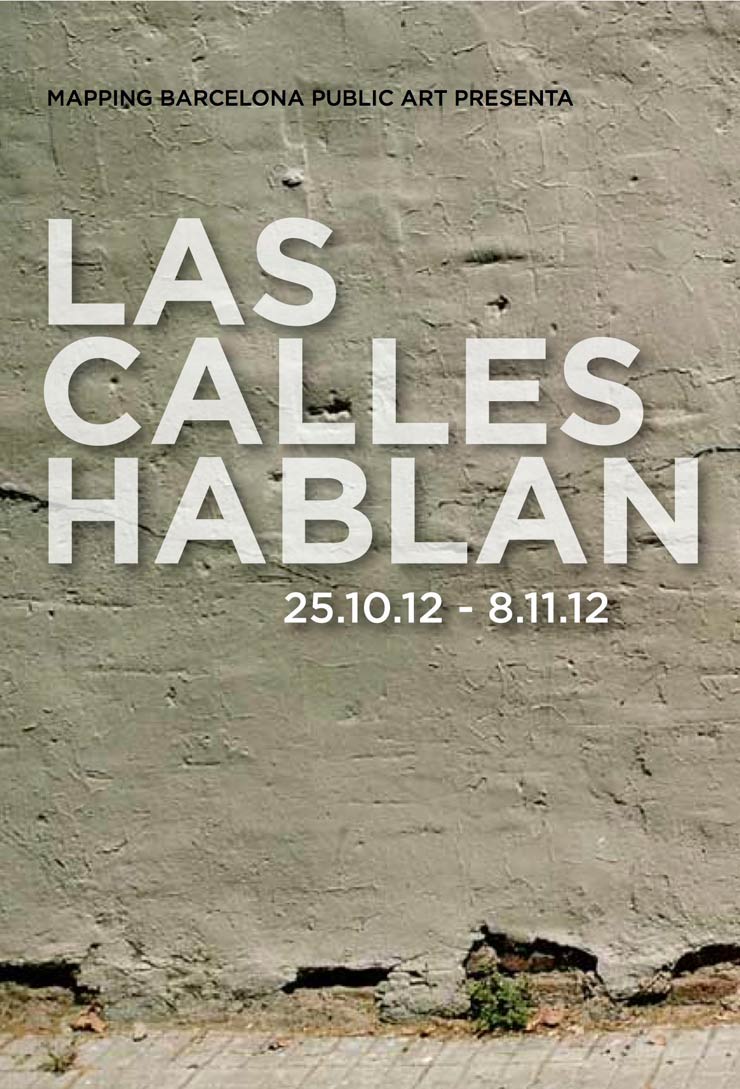Las Calles Hablan, the first exhibit by Mapping Barcelona Public Art, is about the evolution of street art in Barcelona. The opinions on graffiti go in many different directions – love, hate, indifference. This exhibit welcomes all opinions, inviting everyone to see and learn more about their community and how graffiti can be a compelling element for a visual discussion. Barcelona, like many cosmopolitan cities, has a rhythm, a natural beat that carries and communicates its personality: the very soul of the place. It carries the mood but also embraces the history in the streets. This vibrant energy has attracted many graffiti artists from around the world to live and work, documenting the life and soul of the city on its walls. here because of this energy.
After the death of Franco in the 1970s, Barcelona evolved into a bohemian, cultural city creating a place and environment where the people could reclaim their space, their culture and language. Over the next decades, the city flourished with street art freedom: graffiti along the city walls, music in every corner. During this urban cultural renaissance, artists created a public gallery where the people could enjoy a city which is flourishing with artistic expression. The street art of this time often provoked playful interchanges or posed political, economic or cultural questions. There was a public conversation between the artists and the people in the streets.
Other cities, like Rio de Janeiro and Buenos Aires, developed and embraced their rich street art scenes to the extent where this urban art has become a part of their cultural identities. However, recent changes to the local laws in Barcelona have tightened restrictions on street art, increasing fines and limiting the spaces where street art can be shared with the people. Las Calles Hablan aims to open up the dialogue in the community about the value of street art by providing information on the various barrios and their history since the fall of Franco, a history of the graffiti scene in Barcelona during that same time period, and sharing photographs of work from various local graffiti artists along a timeline. We encourage and invite an open discussion about the graffiti scene.
Documentary
For the opening, there will be a never before seen documentary film, with footage of incredible graffiti areas in Barcelona, as well as interviews with artists, a street art gallery owner and others in the know. Justin Donlon and Sylvia Vidal are producing this fresh inspirational and educational view of the streets of Barcelona.
Other Articles You May Like from BSA:
Literally that is all Street Artist Banksy has to do to get attention internationally for his work these days. Sneeze! Image ©Banksy from his Instagram account This new piece in Totterdown,...
Special guest Ted Riederer shares the story of a New York artist who, as a gay street youth, made his mark with bold, conceptual graffiti. Blending street culture with high-concept art, his early wor...
Welcome to BSA Images of the Week! Welcome to Memorial Day Weekend in NYC, when New Yorkers remember those who died in wars, and we have parades, barbecues, smoke reefer on the stoop, ride th...
Our final posting from Montreal's MURAL festival gives you a sense of the the size, variety, and quality of the expanse of works on display over four days. With any luck, most of these will be up mu...
We’re celebrating the end of one year and the beginning of the next by thanking BSA Readers, Friends, and Family for your support in 2023. Picked by our followers, these photos are the heavily ci...
 BROOKLYN STREET ART LOVES YOU MORE EVERY DAY
BROOKLYN STREET ART LOVES YOU MORE EVERY DAY










